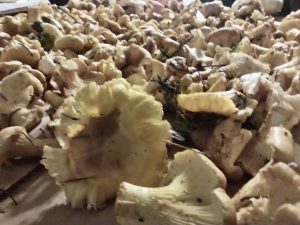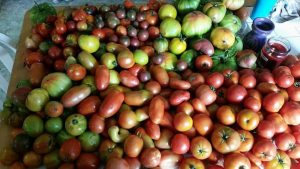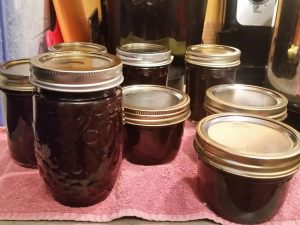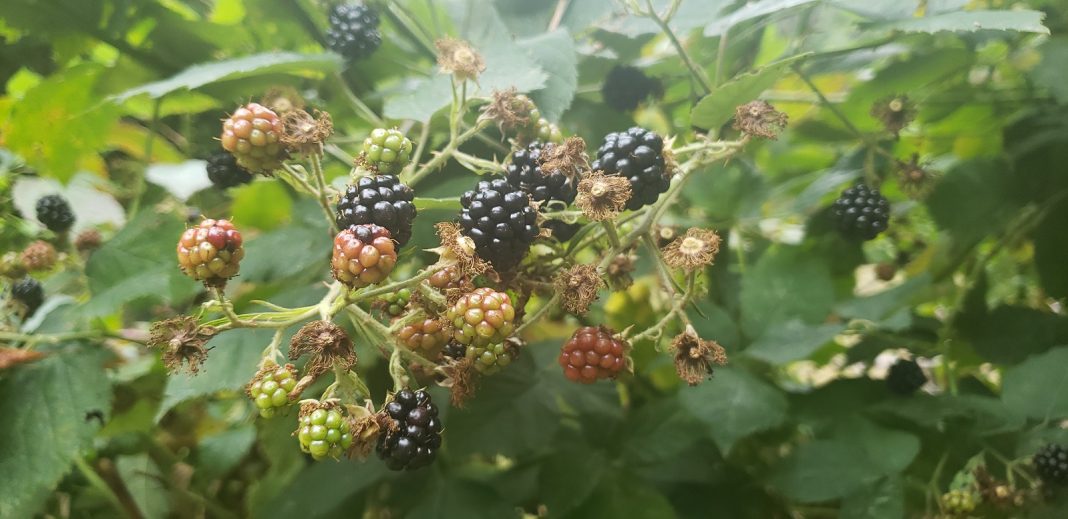During harvest season, the farmers markets are ripe with fresh food. Savoring a juicy peach or lovely berry is one of the best parts of summer. With our short growing season, local fresh fruit and vegetable availability is limited to a few months. That is unless it’s preserved. From canning and jamming to dehydrating and pickling, there are many ways to save the summer harvest for chillier months.
 Safety and sanitation are paramount in food preservation. The National Center for Home Food Preservation is a reliable source for current research-based recommendations for methods of home food preservation and processing.
Safety and sanitation are paramount in food preservation. The National Center for Home Food Preservation is a reliable source for current research-based recommendations for methods of home food preservation and processing.
Gleaning
Grab the family and go gleaning. Gleaning is the collection of leftover crops from farmers’ fields and includes surplus produce from trees and gardens in the community and public areas. Right now, the area is ripe with berries and produce ready for preservation to enjoy in the winter months. Know someone with a fruit tree they aren’t going to use or a garden with extra bounty? Ask around and find what others might let go to waste otherwise.
Foraging

There are plenty of wild herbs and plants that grow in our temperate region that are beneficial to health and great for food. Northern Bushcraft provides an easy-to-use guide on wild edible plants of the Pacific Northwest.
When the rain returns and before the frost, mushroom foraging is in peak season. There are many delicious varieties growing locally. For guidance on how to gather wild mushrooms safely, Fungi Perfecti offers resources and tools.
Freezing
Freezing is the simplest method to hold on to the harvests of summer. For best results, lay produce out on a sheet and freeze and then bag in small quantities. Vegetables require blanching first in a quick hot water bath followed by a short soak in ice water.
Herbs not dried for later use are easily frozen in olive oil in ice cube trays. Bag after freezing and use in soups, stews and sauces later.
Canning

Ball provides tried and true advice and recipes for canning. The first step is to sterilize any jars, lids and seals by boiling them for 20 minutes. Preserving and pickling require specific pH and water content so no foodborne bacteria develops. Follow recipes exactly to ensure everything is in perfect balance.
For most vegetables and all meats, a pressure canner is required. Pressure canning reaches the high temperature of 240°F to safely preserve low acid foods and destroy foodborne bacteria and create a vacuum seal necessary to prevent spoilage.
Pickling
Many veggies can be pickled including cauliflower, cabbage, beans, peppers, onions, kohlrabi, turnips, carrots and beets. Low acid foods need to be pickled with vinegar first and can then canned in a hot water bath.
Jams, Jellies and Sauce

Buckets of blackberries make wonderful jams or jellies and only need a hot water bath to can. They grow prolifically in parks, along paths and on the forest’s edge.
The state’s official fruit, apples are versatile in preservation. Applesauce or butter made from a mixture of varieties is so much more delicious than store bought. Apples and most fruit only require a water bath to can.
Dehydration
For a healthy snack, dehydrate apple slices or any fruit really. Without a dehydrator? The oven works too, just with a bit of time. Set the oven to the lowest temperature and let the fruit dry until it is crisp.
Overripe fruit works well to make fruit leathers. Simply line a baking sheet or dehydrator tray with plastic wrap and add fruit puree. Test for dryness by touching center of leather; no indentation should be evident. While warm, peel from plastic and roll, allow to cool and rewrap in plastic.
Juicing
Pressing cider is tons of fun. Check with friends to see who has a press and have a pressing party where everyone brings loads of a variety apples and sterile jugs. Grapes are in season now too. Both can be canned in a water bath or frozen for later use.
If buying equipment is cost prohibitive considering borrowing it or renting. Eastside Urban Farm and Garden Center rents an apple press, smoker, dehydrating units, canners, vacuum sealers, sausage grinders and more.
Now is the perfect time for canning and storing. Preserve the last of this season’s harvest and enjoy the taste of summer all year long.



















































